Restoration of Westland Wasp HAS.1
Westland Wasp HAS.1 History |
|
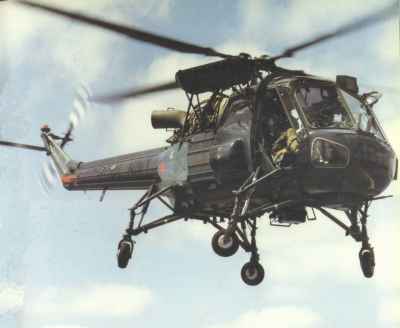 |
A light anti-submarine
and anti-surface vessel helicopter, XT443 was the 60th Wasp built
for the Royal Navy at the former Fairey factory in Hayes, Middlesex.
It first flew, at Yeovil, in March 1966 and served, with No.829
Naval Air Squadron, aboard several Royal Navy frigates including
HMS Galatea (1974-80) and HMS Aurora (1981-87). It survived a crash
landing at Portchester, Hampshire, in March 1971 while on a test
flight from Fleetlands. After introduction of the Westland Lynx,
XT443 was retired to Wroughton, in May 1987, but then returned to
Westland at Sherborn in 1990. It was acquired by The Helicopter
Museum in January 1995. |
The Wasp was powered by one 710 shp Bristol-Siddeley Nimbus 103/104 turboshaft engine, developed, by Blackburn, from a French Turbomeca design. It was capable of carrying two Mk44, or Mk46, homing torpedoes, Mk.11 depth charges or two wire-guided Nord AS-12 air-to-surface missiles. The AS-12 missiles were fired by the pilot, then guided by an
aircrewman/aimer in the left-hand seat, using a movement stabilised
optical sight and a small joystick. The guide wires were jettisoned,
when the missile reached its target, by activating wire cutters
in the launcher. However, Wasps, on Royal Navy frigates, were
intended, primarily, as anti-submarine delivery vehicles. |
|
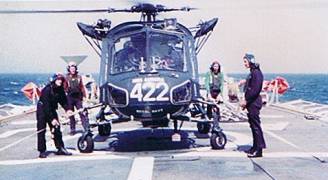 |
Other duties included SAR,
liaison and reconnaissance. Nearing the end of their active lives,
a few of the remaining Wasps, belonging to 829 Naval Air Squadron,
operated from eight ships during the 1982 Falklands campaign when
they flew a total of 712 combat sorties. HMS Aurora, to which XT443
was assigned in 1982, was not sent to the South Atlantic but went
to the Arabian Gulf to join the Armilla Patrol. The photograph (left)
shows XT443, on Aurora's deck, while passing through the Mediterranean,
en route to the Suez Canal and the Gulf of Oman, in July 1982. Thanks to Ian ('George') Cant for the photograph. |
| The first Wasp HAS.1 entered service in 1963, as the first helicopter in the world designed specifically to operate from the decks of frigates. A total of 98 Wasp helicopters were produced for the Royal Navy in addition to 35 for the export market. By the late 1980s the type had disappeared from Royal Navy service, but several surplus helicopters were passed to other operators. A few were exported to Indonesia, Brazil, the Netherlands, South Africa and New Zealand. Others went to Malaysia where they remained in service until 2002. A number of Wasps remain airworthy in private hands. | |
Westland Wasp HAS.1 Restoration |
|
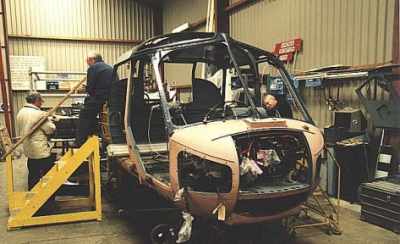 |
Wasp XT443, at an early stage of its restoration, in 1999. |
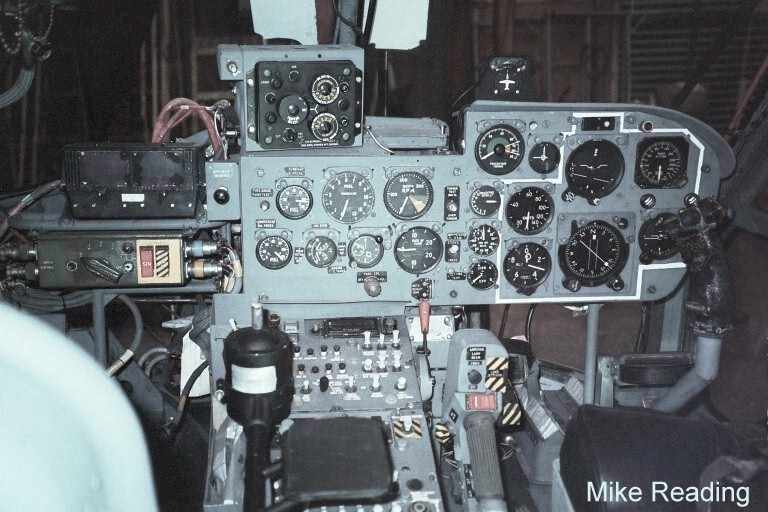 |
Control
and instrument panels of the Wasp, following extensive restoration
and refurbishment, were photographed on 16th August 2001. Photo by Mike Reading. |
| Re-installing the Rolls Royce Nimbus Mk.10301 engine on the Wasp on 10th December 2000. The engine had been cleaned, but not too thoroughly, to convey the look of an engine in use. | 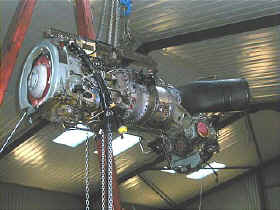 |
| Fitting rotor blades to the Wasp on Saturday 19th May 2001. The main rotor diameter is 9.83m. | 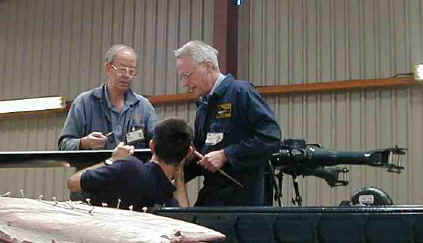 |
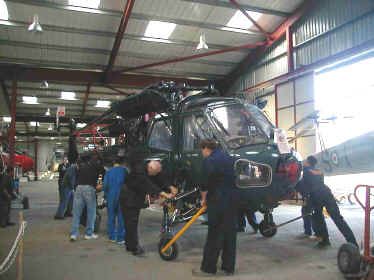 |
On 29th September 2001 XT443, with rotor blades and tailboom folded, was moved, via the Display Area, to the centre of the Restoration Hangar for the final fitting and alignment of doors and undercarriage. As on some other display machines, Perspex was fitted in place of one of the doors to allow close observation by visitors, without sacrificing security. At the end of October the Wasp was moved out to the Display Area permanently, to make space for the Bristol Belvedere (XG452). |
| The Westland Wasp HAS.1, XT443, has been on display in the Exhibition Hangar, near to the Westland Scout AH.1, XP165, since late 2001. | 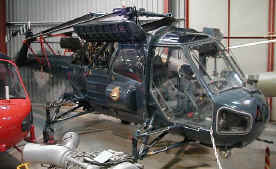 |
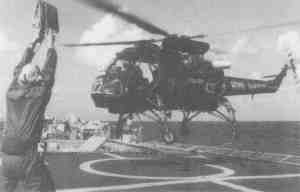 |
Not XT443 but another Westland Wasp, HAS.1, of the same vintage, probably XT420, lands on a Royal Navy Leander class frigate. |
| Falklands Anniversary | |